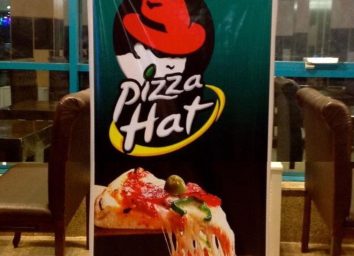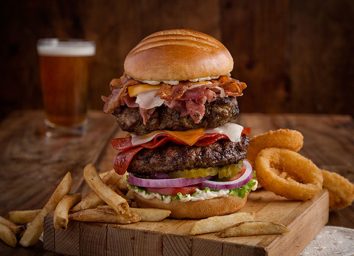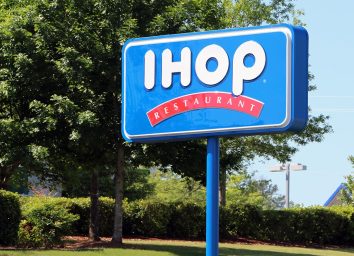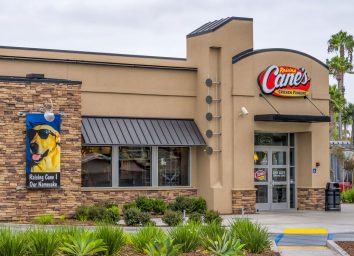20 Ways Restaurants Trick You Into Spending (and Eating) More
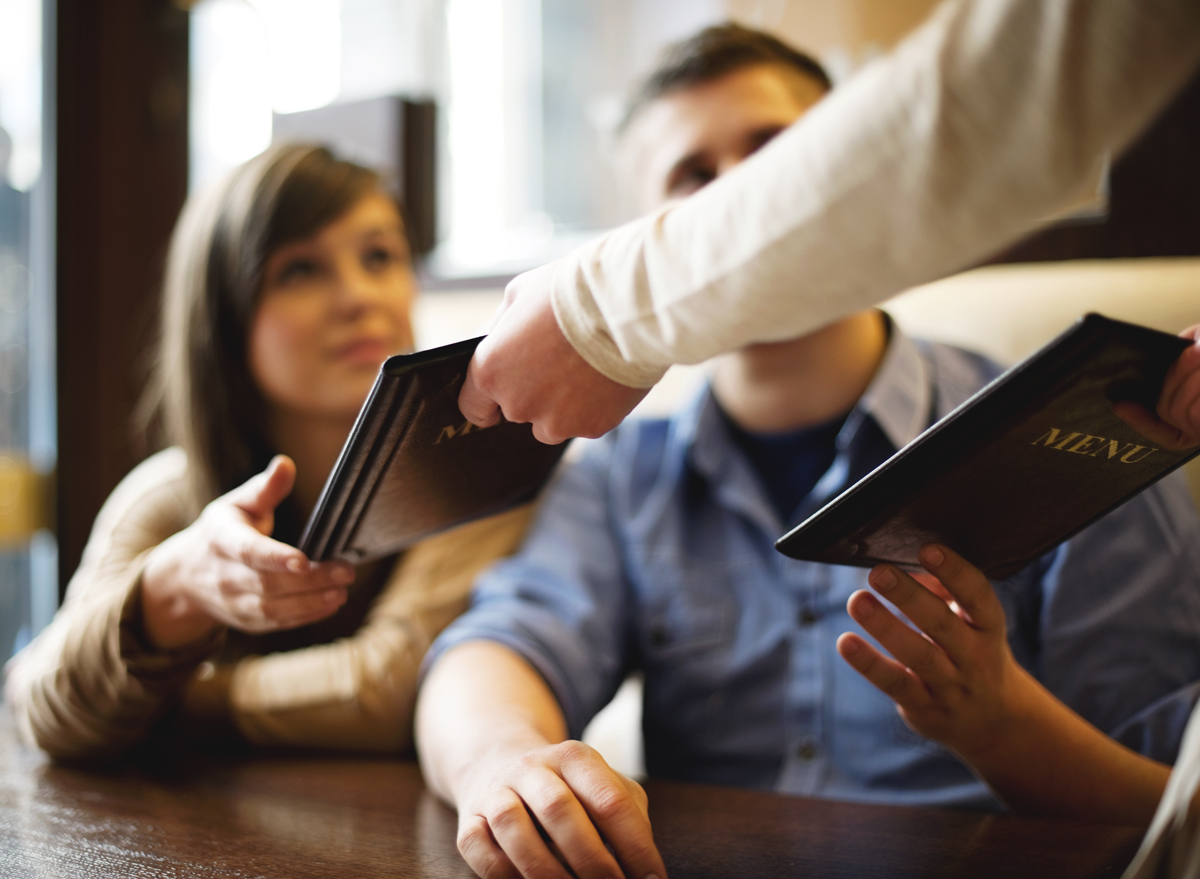
If you’ve ever worked in a restaurant, you probably feel like you know too much about dining out. Once you’ve pulled back the curtain, it’s hard to unsee all the clever tactics restaurants and servers use to get you to fork over more of your hard-earned money.
For those who haven’t had a server, hostess, manager, or another food-service job, those secrets are likely a mystery. You know you tend to leave restaurants with your stomach fuller and wallet emptier, but you don’t know you’ve been had by some sneaky restaurant tricks.
By culling through insider information from servers and restaurant managers, along with some scientific studies, we’ve put together a list of all the ways restaurants get you to order more items—and pricier ones at that. Turns out, so much of it comes down to psychology.
In fact, servers begin sizing you up the moment you sit down. Their goal? To make you believe what you ordered was entirely your decision—when really, you’ve been guided straight toward it, says an Atlanta-based top-earning waiter and restaurant manager with years of experience who asked to remain anonymous. “The goal isn’t to get someone to buy something that they don’t want. The goal is to be able to identify what people do want, and then use psychology to guide them towards making that decision themselves.”
Many restaurants help the process along considerably, sending you subconscious cues via strategic menu design, music choices, and even “decoy pricing.”
Below are all the shocking and sneaky restaurant tricks that get you to both eat and spend more.
Using a “decoy”
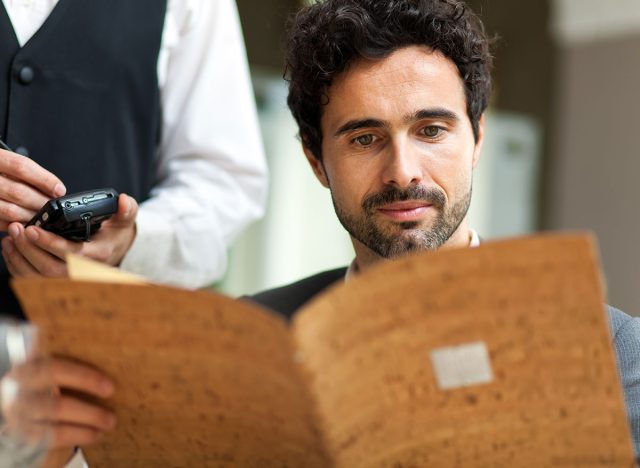
Most restaurants don’t necessarily want you to order the most expensive entrée on the menu. They want you to order the entrée that they make the most money on. But how do they get you to do that?
Well, according to Joshua Clark of Stuff You Should Know, restaurants commonly place a somewhat pricey item with a high-profit margin close to a noticeably more expensive item with a lower profit margin on the menu. By comparison, that makes the former option seem like a good deal and a responsible choice for diners.
This practice is called “decoy pricing,” and the wallet-busting item that effectively makes everything surrounding it seem like a better value is called “the anchor.”
Using barbell pricing
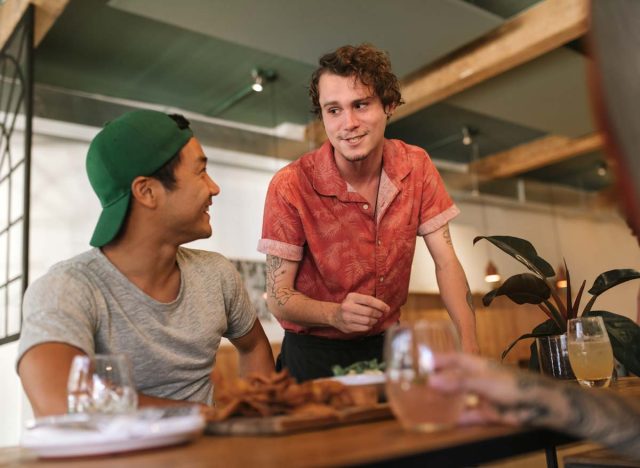
Another version of this technique is called barbell pricing. Instead of a decoy, an expensive item that most people won’t buy, a restaurant will put two items of slightly different prices, but different values next to each other for the patron to choose, i.e. weigh one or the other mentally. The restaurant will see more traffic from the deals, but the slight price upgrade nearby could catch the eye of someone wanting a little bit more. This means pulling back on some deals to steer willing customers away from the cheapest options.
Pushing drinks upfront
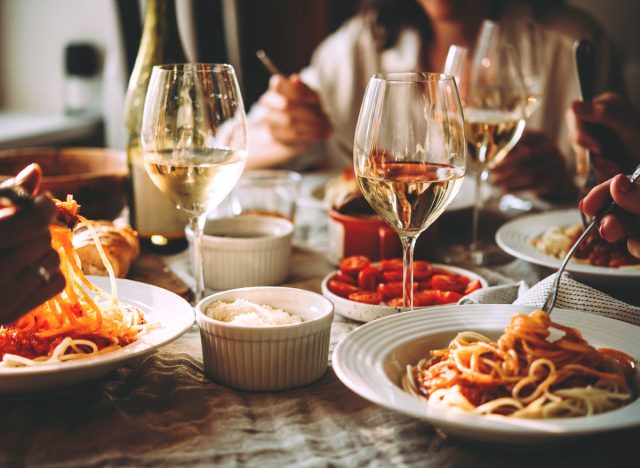
Giving customers a drink menu early on in a meal has become common practice at restaurants, and there are a few reasons why. Firstly, it’s no secret that after the second glass of wine, you might find yourself more receptive to the persuasiveness of a server who’s handing over a dessert menu when you’re already stuffed.
But on top of that, drinking alcohol makes us more likely to indulge. A 2015 study out of Indiana University’s School of Medicine published in the journal Obesity found that female participants under the influence ate more than those in a sober placebo group.
MRI scans showed that in the tipsy group, the hypothalamus, which controls the metabolism, tended to be more responsive to the smell of food, making those women feel hungrier.
Wondering what your server is really thinking? In this candid report, servers reveal the customer behaviors they cannot stand.
Asking if you’d like a specific side dish
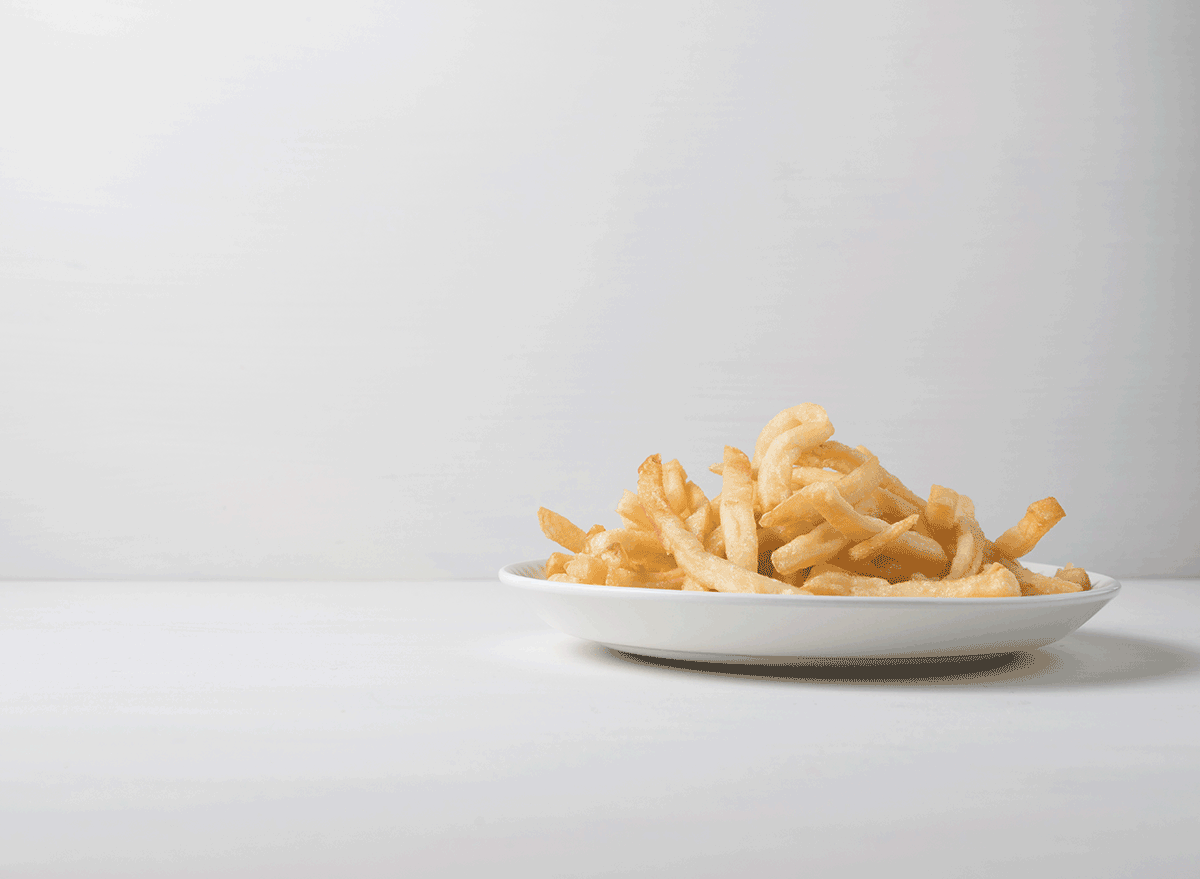
“Would you like a side of fries with that?” is a classic upselling move at restaurants, according to Charles Gaudet, CEO of Predictable Profits. Of course, the answer is usually yes.
But when your meal shows up, you might find that you’ve ordered much more food than you’d planned on eating. And when you get the bill, you might also see an unexpected bump in the price tag for something that you thought was included in the cost of your entrée.
A server in Reddit’s “Tales From Your Server” forum had another approach to this tried-and-true trick. “If you word it as it being a ‘pairing’ of dishes instead of just a flat out upsell, people usually respond better,” Reddit user drburns420 wrote. “Like, ‘Oh, would you also like to try some of our mashed potatoes? They go so well with that entrée you just ordered.'”
Offering another bottle of wine, but settling on a glass
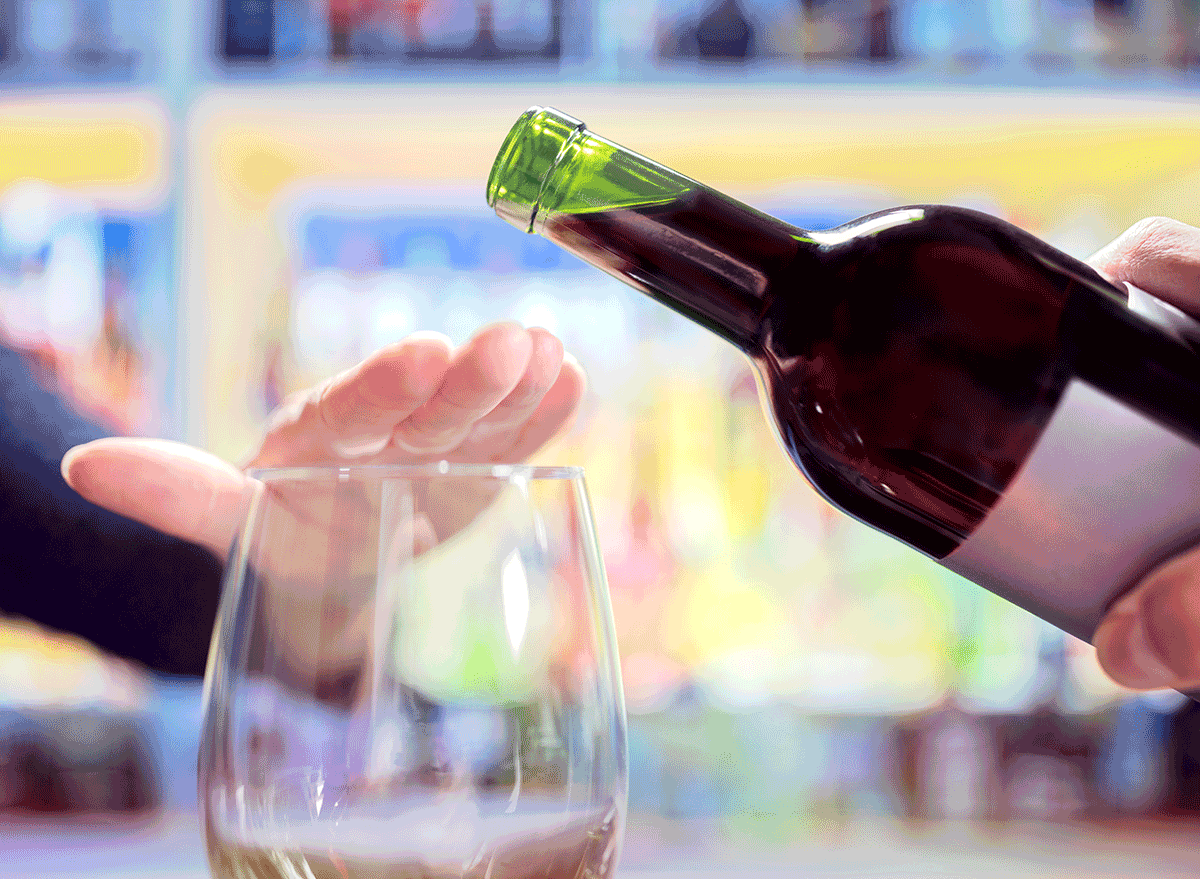
If a server offers your table another bottle of wine, your gut (or your liver and wallet) might tell you that it’s too excessive. But by comparison, an additional glass might feel like you’re exercising restraint—even if it wasn’t part of your original plan. That’s why a server tends to ask if you’d like another bottle first.
Our food industry insider told us that this common move is the alcohol equivalent of decoy pricing. Your server is essentially using an indulgent choice (a whole bottle of wine) as a red herring to make the mid-range choice that the restaurant makes more money on (a glass of wine) more appealing.
Using negative space on the menu
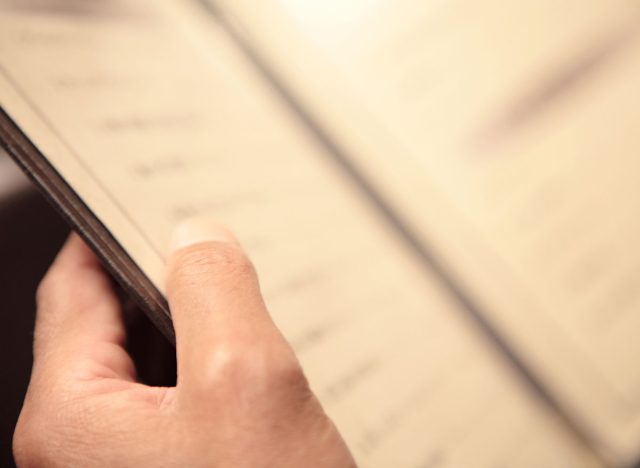
What is a restaurant menu if not an advertisement for the food on offer? And what’s one of the most common visual advertising tools? The use of negative space to emphasize a message.
Pockets of negative space will naturally draw the eye to a featured item by visually singling it out. It’s prime real estate for the restaurant’s star: an entrée that’ll make them the most money. “If a menu is crammed with text, the eye will naturally be drawn to any open spaces,” says Aaron Allen, a global restaurant consultant. “Items with the largest profit margins are often set in their own space, away from the hustle and bustle of the rest of the descriptions.”
On top of that, a simple menu design contributes to a more sleek, upscale, and refined brand image. Using negative space is a win-win for restaurants.
Offering dessert “or just another glass of wine”
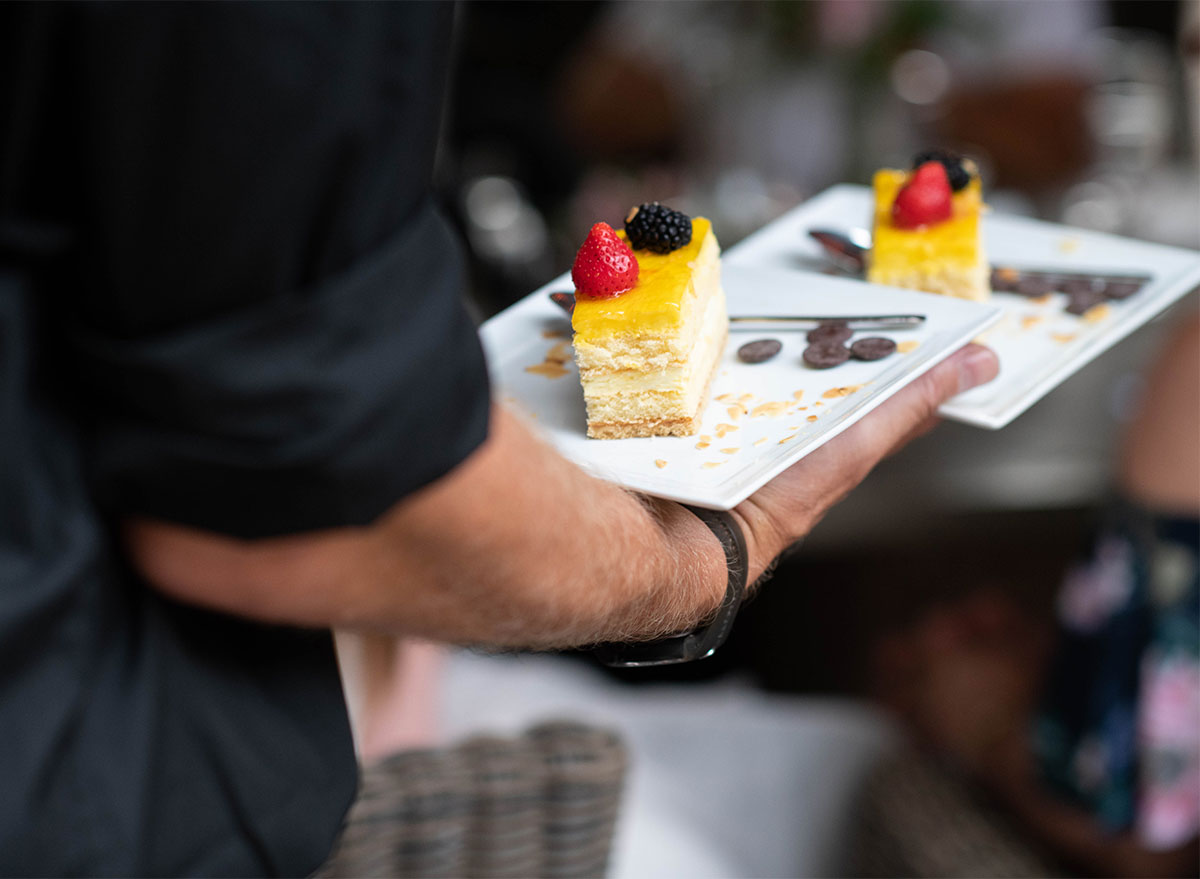
Sure, ordering dessert might nudge the bill up by a few dollars and give your server a little boost in the tip. But from the restaurant’s standpoint, desserts have razor-thin profit margins and a concrete ceiling for how much diners are willing to pay.
If a server offers dessert “or just another glass of wine,” that gives the patron an opportunity to turn down dessert for something that seems like less of a commitment and is more moderate from a calorie perspective. But the wine is actually a better sale for the restaurant.
“A cocktail brings in twice as much money as a dessert, and it doesn’t hold up a table at the end of the meal,” Mark Bucher, owner of Medium Rare in Washington, D.C., told The Washington Post.
Downselling
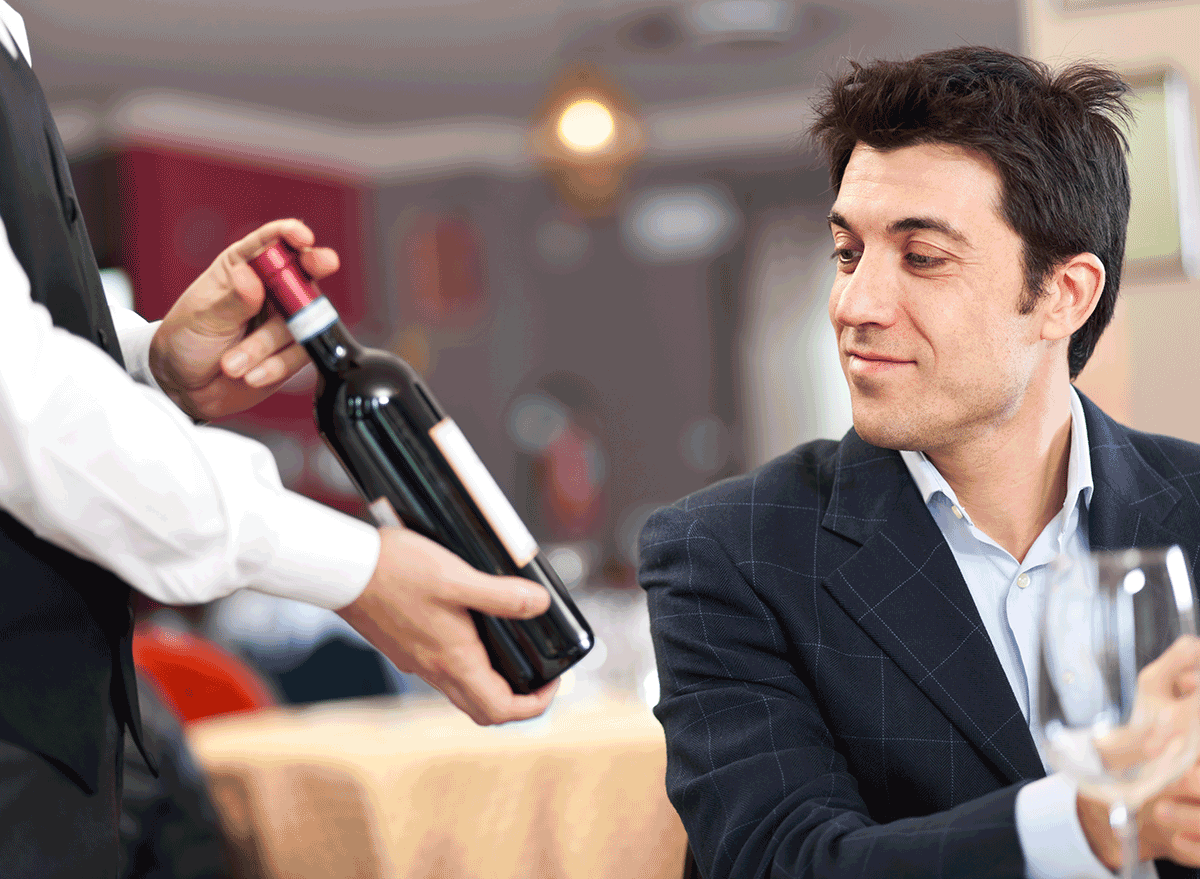
It may sound counterintuitive, but severs will often subtly down-sell a customer as a form of reverse psychology—especially if the customer is “someone who flaunts that they have money,” our industry insider said.
If a server mentions an expensive wine option briefly and then pushes another bottle that’s a “better value,” many times the person will buy the more expensive wine to show that they don’t need a “better value.”
Suggesting a “personal favorite”
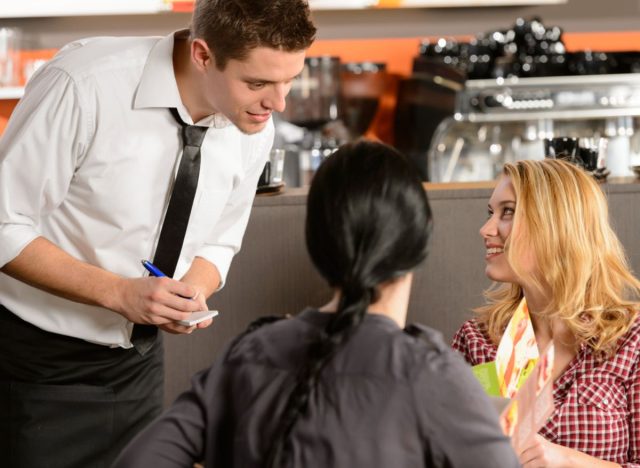
Servers who seem sincere in sharing the menu items they personally prefer are able to connect more with their customers. Even if servers haven’t actually tried everything on the menu some will tell you their favorite meal is one of the pricier ones. One server said via Reddit: “To be honest, if it can’t be eaten in 15 seconds and/or while hunched over a garbage can, I have no idea. But it’s $36 so I’m gonna tell you it’s the best thing on the planet.”
Selling you on exclusivity
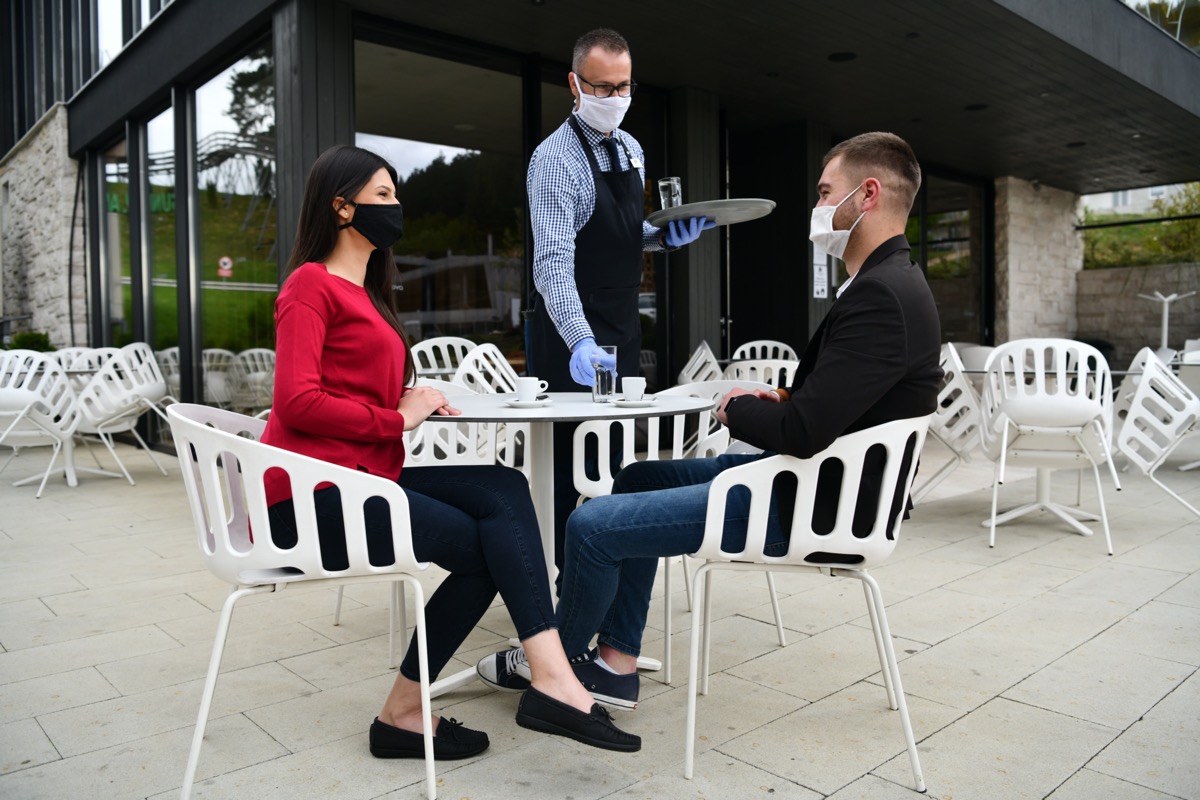
According to our industry insider, one effective way to coax a customer into spending more at a restaurant is to make an item seem like a rarity. “Mentioning something off the menu that ‘we only just got in and won’t have for much longer’ can prompt a sale,” he said.
Asking if you’d like “flat or sparkling”
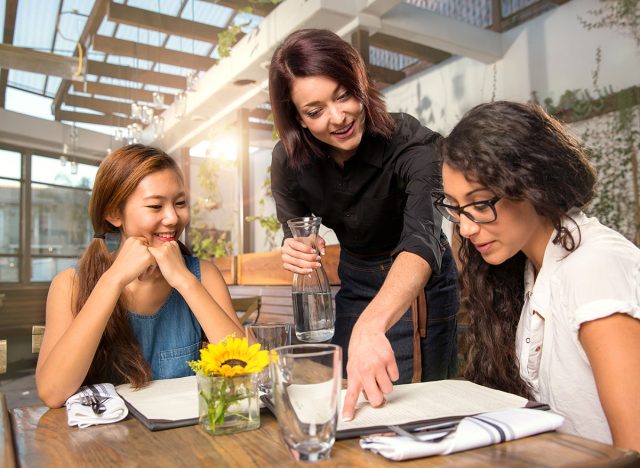
In a Reddit forum for servers looking for tips on upselling customers, a user suggested asking diners if they’d like “flat or sparkling” water at the start of their meal.
The customer may feel embarrassed to order tap water instead and cave for the pricier bottled water. And whether or not a diner was easily pressured may also signal to the server which person at the table is most likely to give in and order higher-ticket items in general.
Pricing strategically
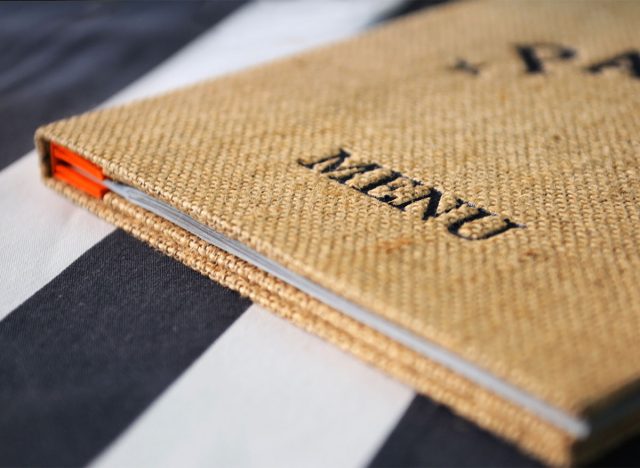
At fine dining restaurants, you’ll probably notice that prices are typically rounded to the dollar. This sends a confident signal that the restaurant’s dishes are worth the price.
At more casual restaurants, where customers are likely to factor in value for their money, you’ll see items priced at five cents under the target cost. So, an entrée will be $12.95, instead of $13 (which psychologically, can seem like a full dollar more) or $7.99 (which can seem like a cheap gimmick).
“Humans are incredibly bad at processing numbers intuitively and have a tendency to remember the first thing they see in any sequence,” one Redditor wrote. “When something costs $1.95 or the like, your brain sees $1 first. Then when you try to figure out about how much it costs, your brain says ‘about $1’ rather than ‘about $2.'”
Walking by with food when you’ve only ordered drinks
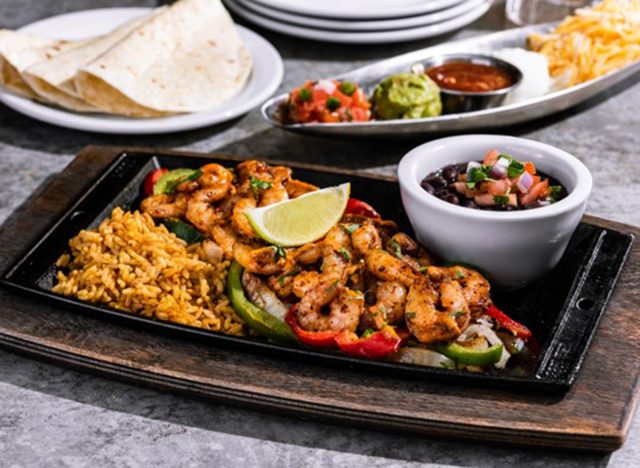
When you stop into a restaurant for drinks only, your server will usually set a single menu on the table, “just in case you change your mind.” Then, they’ll walk by you with another table’s appetizers to get food on your brain. “If I have a table only drinking, I make sure I walk by them with good-looking apps and food,” one Redditor explained.
The more drinks you have, the more likely you are to change your mind and order a dish or two. Besides, you wouldn’t want to drink on an empty stomach, would you? Some restaurants, like Chili’s, have dishes that are required to audibly sizzle. This attracts a customers attention and, perhaps, gets them to order the dish.
Removing the dollar sign
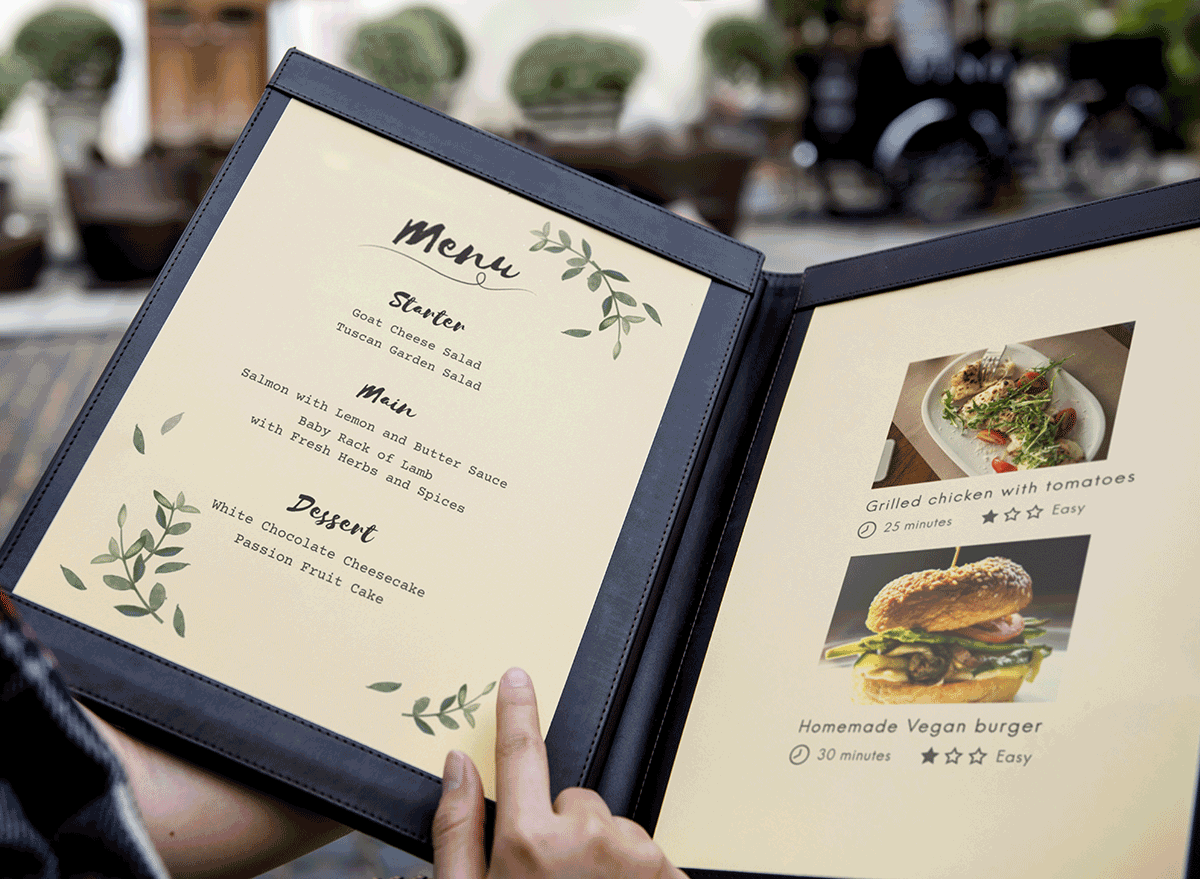
One of the worst mistakes a restaurant can make on its menu is to include dollar signs. A 2009 study from Cornell University’s Center for Hospitality Research confirmed that groups offered menus with dollar signs next to the prices spent far less than those given menus with only numerals. The dollar sign is a rather powerful visual trigger that reminds us we’re about to lose something we value, prompting our instinct to spend with restraint.
Playing off personality types
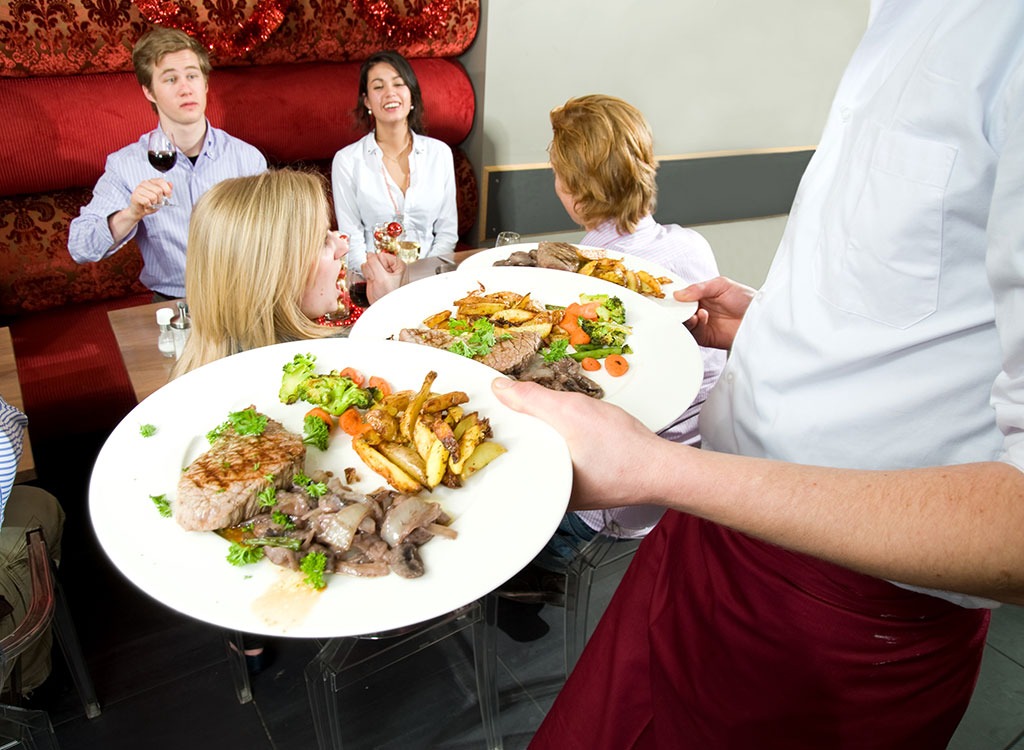
At fine dining establishments, it’s not uncommon for a seasoned server to identify the different personality types at the table, and work them accordingly.
“Identifying the ‘alpha’ person at the table is the first step,” our industry insider says. “Using the ego of the alpha as leverage, a server can put them in a position to buy a more expensive cocktail or bottle of wine by subtly implying that, like the alpha, it’s special.”
The next step is to identify the beta at the table, aka “the person who wants to be or impress the alpha,” our insider says. “That person many times will buy a more expensive bottle of wine and pick up the check in trying to impress.”
Using heavier plates and cutlery
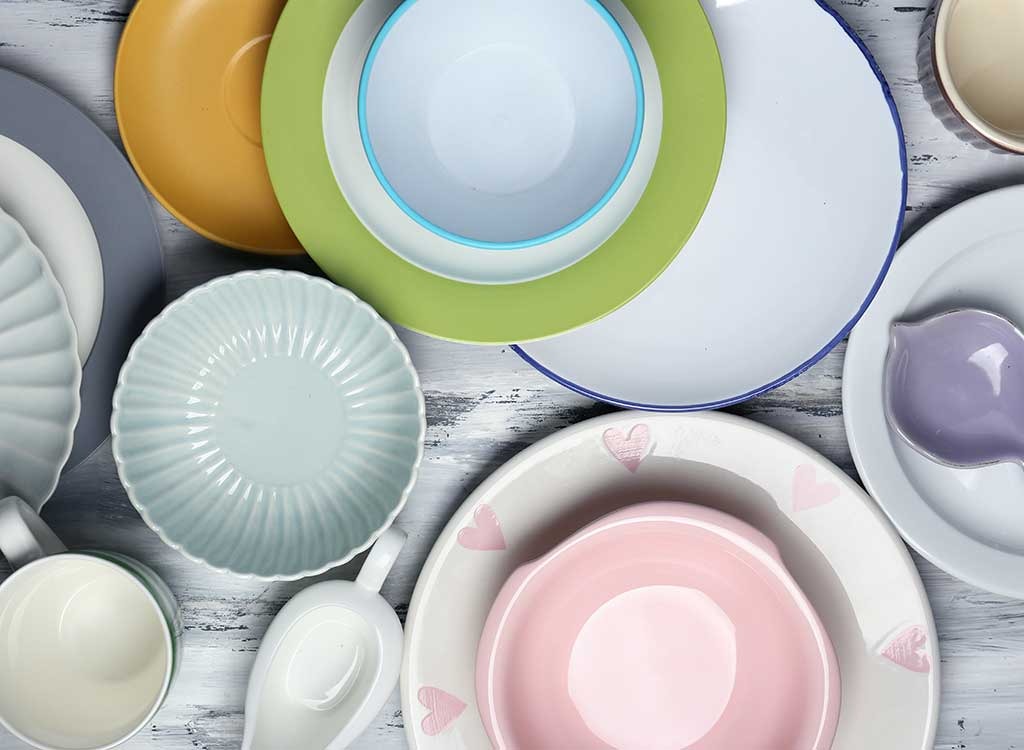
Restaurants that invest in heftier flatware and cutlery are sending you a subtle signal that their food is worth a hefty price tag.
According to Charles Spence, a professor of experimental psychology at Oxford University, how much we enjoy our food has a lot to do with the tools we use to eat it. In his 2013 study on the subject, which was published in the journal Flavour, Spence found that because we associate heavier plates and cutlery with the expense, we tend to view meals eaten off them as more luxurious and enjoyable.
Using descriptive language
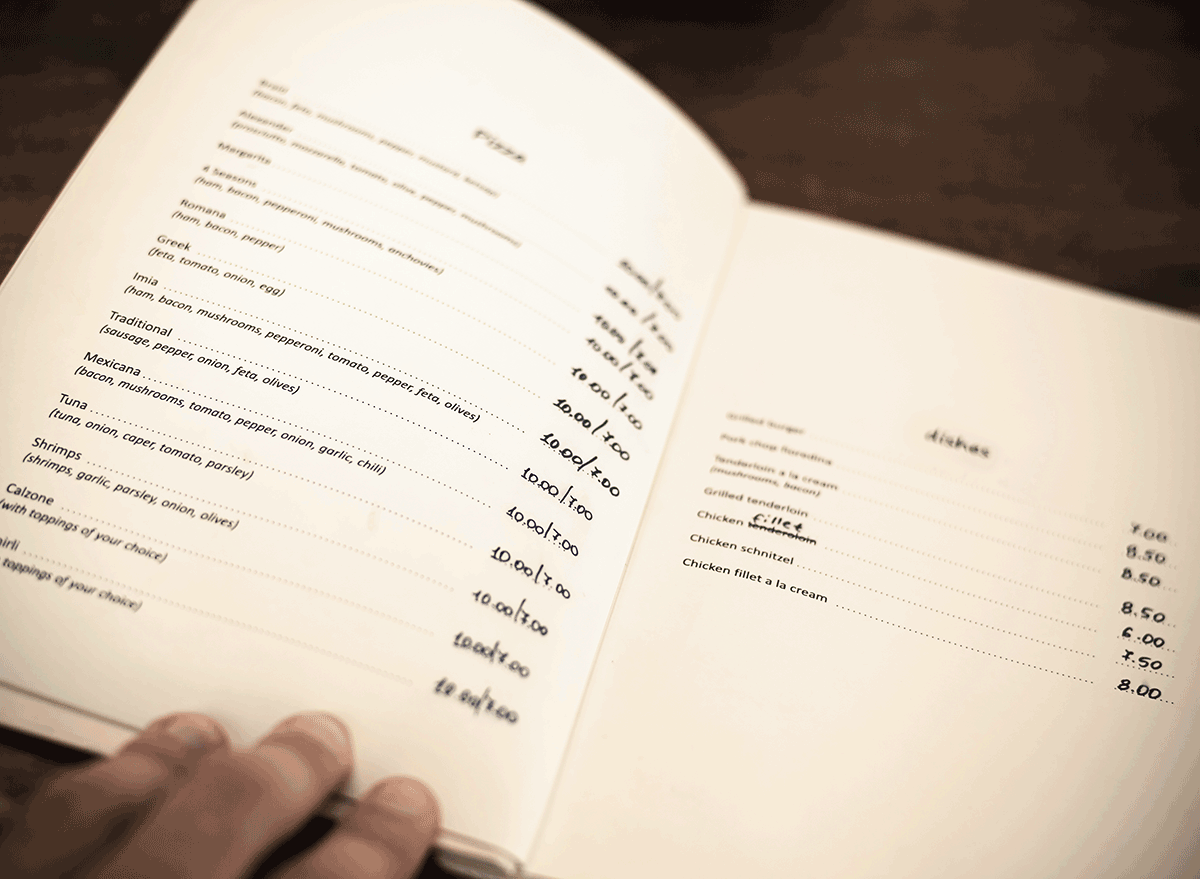
“Superlative claims—descriptions like ‘the world’s best burger’—can’t possibly be true, and diners will simply ignore them,” restaurant consultant Allen says. “However, enticing adjectives, like ‘line-caught’ or ‘sun-dried,’ will feed the imagination and get our taste buds tingling.”
In a six-week field study from the University of Illinois Urbana-Champaign, researchers found that adding an enticing description to a menu item increased sales by a whopping 27%. These appetizing descriptions changed customers’ feelings of satisfaction toward the food and the restaurant, even influencing their thoughts about returning in the future.
Playing classical music
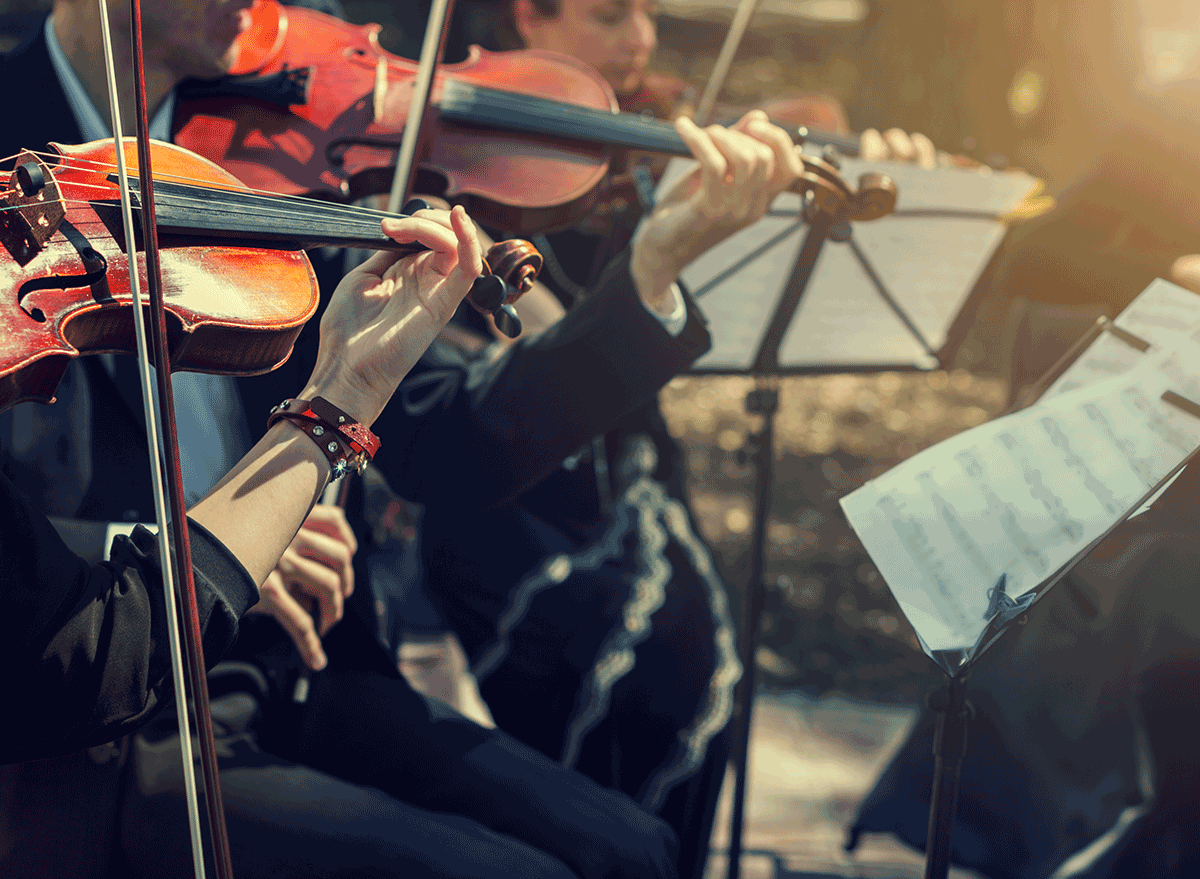
Curating a more cultured atmosphere with classical music is a widely-used tactic in fine dining establishments. At no cost to the restaurant, the music signals to the customer that, just like the atmosphere, the food is exquisite—and worth whatever price they’ve named.
In a study from the University of Leicester published in the journal Environment and Behavior, a restaurant played classical music, pop music, and no music over the course of 18 nights. The classical music inspired guests to spend more money on their meals when compared with the nights when pop music or no music played.
Nesting the prices
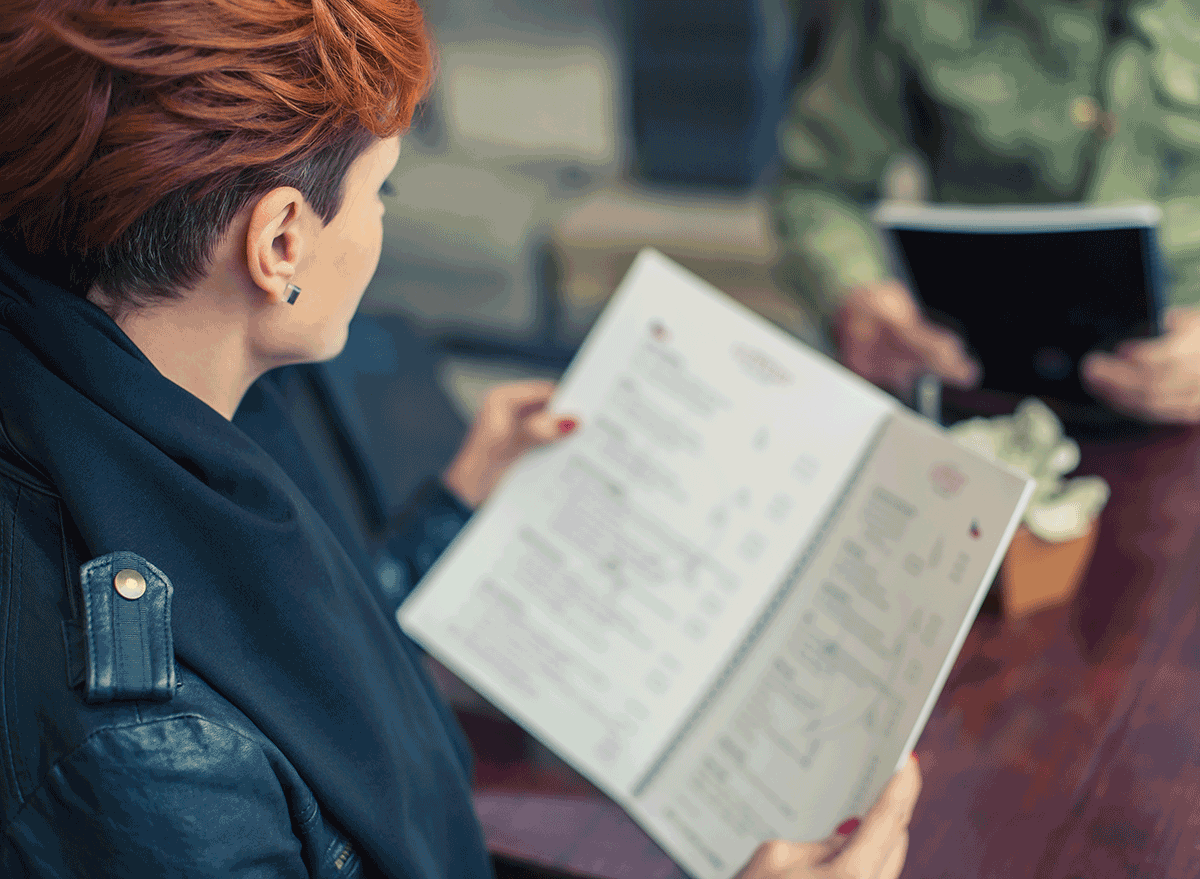
We’ve all seen menus in which the prices are listed on the right-hand side, far away from the food choices. But when diners see this, it’s all too easy to skim the prices, decide what they’re comfortable spending, and then rule out any entrées above that number.
“The goal is to get them to scan the unique item names and well-written descriptions and make their choices based on what sounds/looks good,” Allen said. “Considering the price should be secondary, not primary.” And that’s exactly what “nesting” the prices next to the food items does.
With this menu design, diners are far more likely to consider all of their options and choose based on what sounds most delicious without consulting the price tag.
A previous version of this article was published in November 2020. It has been updated with new information.

